The evolution of frames and their relationship to architecture, PART 2
Posted: 25 Jun 2020 by PML
The first part of this essay considered the relationship of the picture frame to its architectural context from the earliest borders painted around archaic frescos to the flowering of the Baroque style in Europe. This second part takes up the story with the subsequent versions and evolutions of the style.
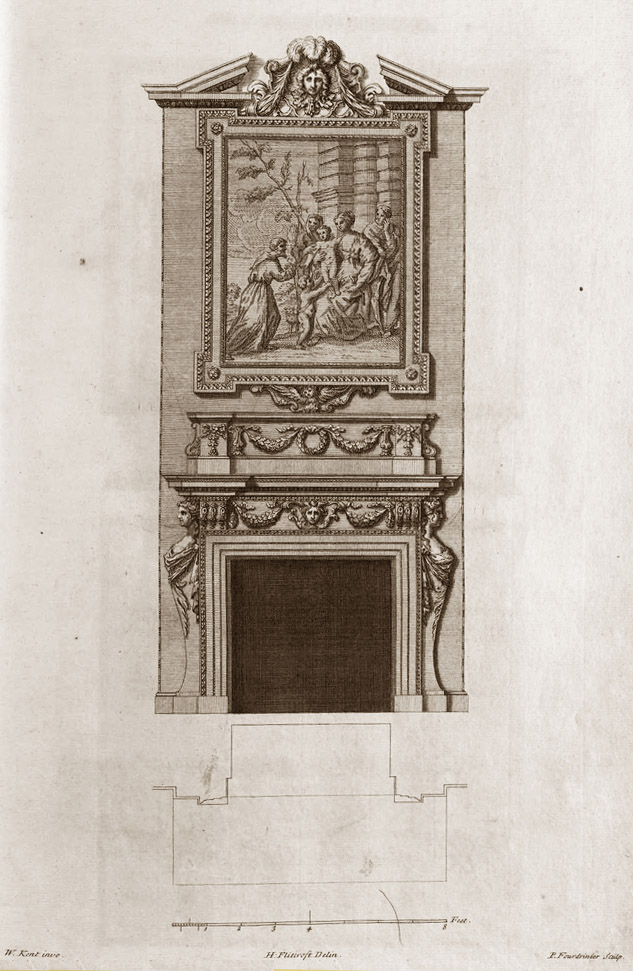
For example, the British version of the Baroque interior was the Palladian style, an enriched form of classicism brought from the Veneto by Inigo Jones, and popularized by William Kent’s publication of Jones’s work, and then by his own related designs. Kent’s interiors are some of the first for which a single architect designed everything, from the fixed architectural elements of chimneypieces, doors, windows, and ceilings, through all the movable furnishings to the silverware and locks – and the frames.
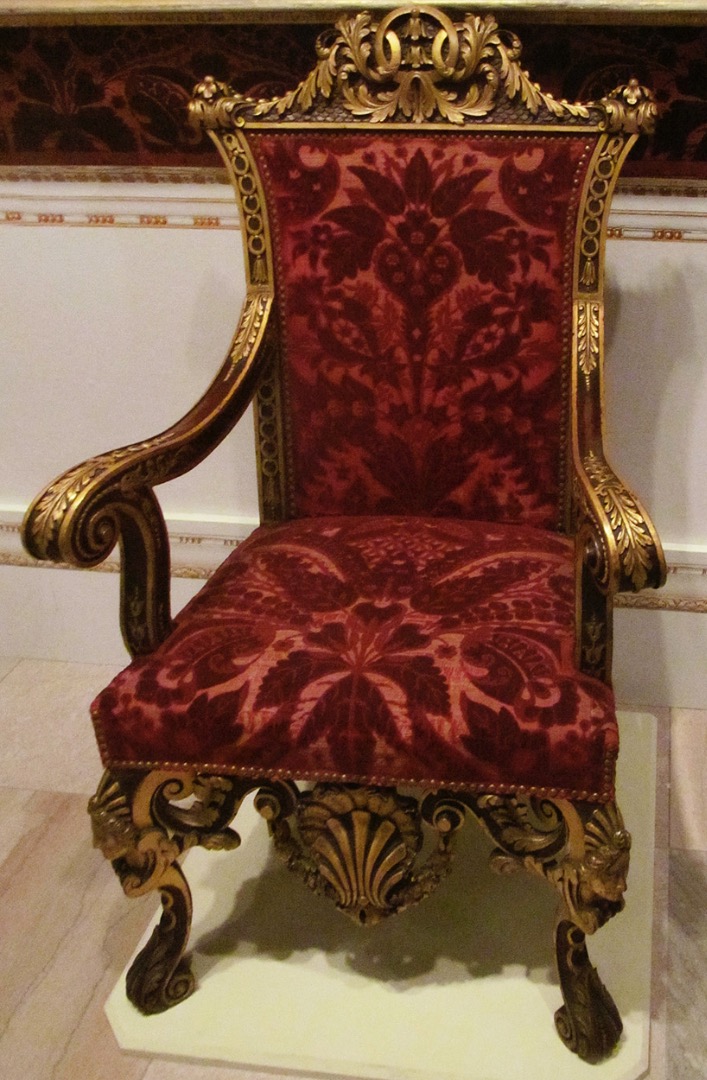
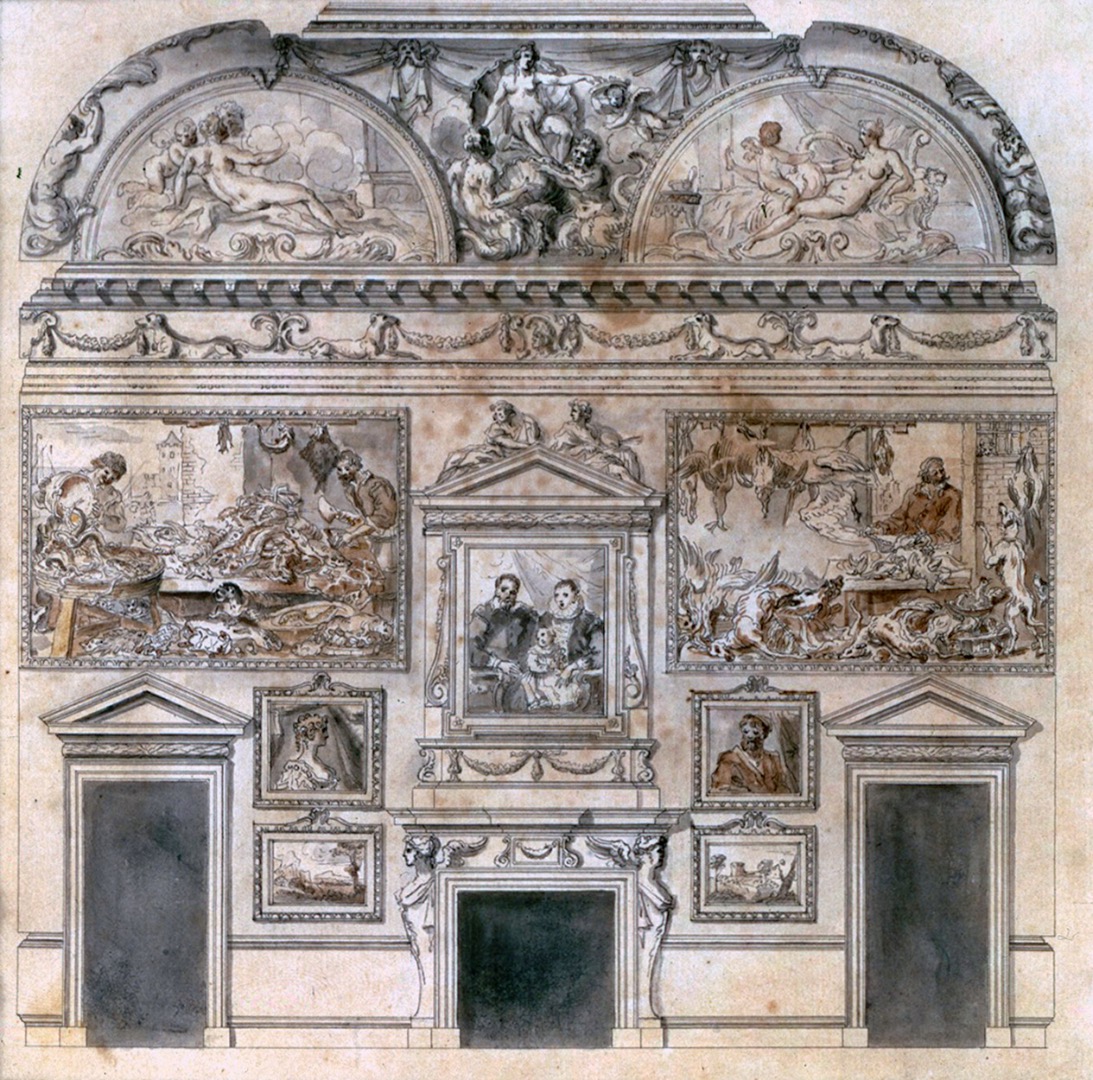
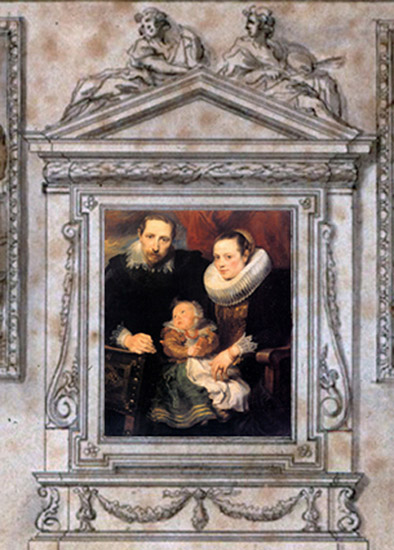
In the elevations of the Saloon he designed for Houghton Hall in Norfolk, the unity of form and ornament is clear; the paintings become playing counters, to be moved about in the search for the optimum balance for the whole wall. Frames are part of the family of architectural features – variations on the theme of Palladian structure and decoration – in a complex choreographical arrangement. The focus of the design for the north wall was to be Van Dyck’s group portrait of a family, painted a century before, but set into a frame which both subordinated it to the overall concept and celebrated it in an opulently dramatic and putti-laden architectural structure.
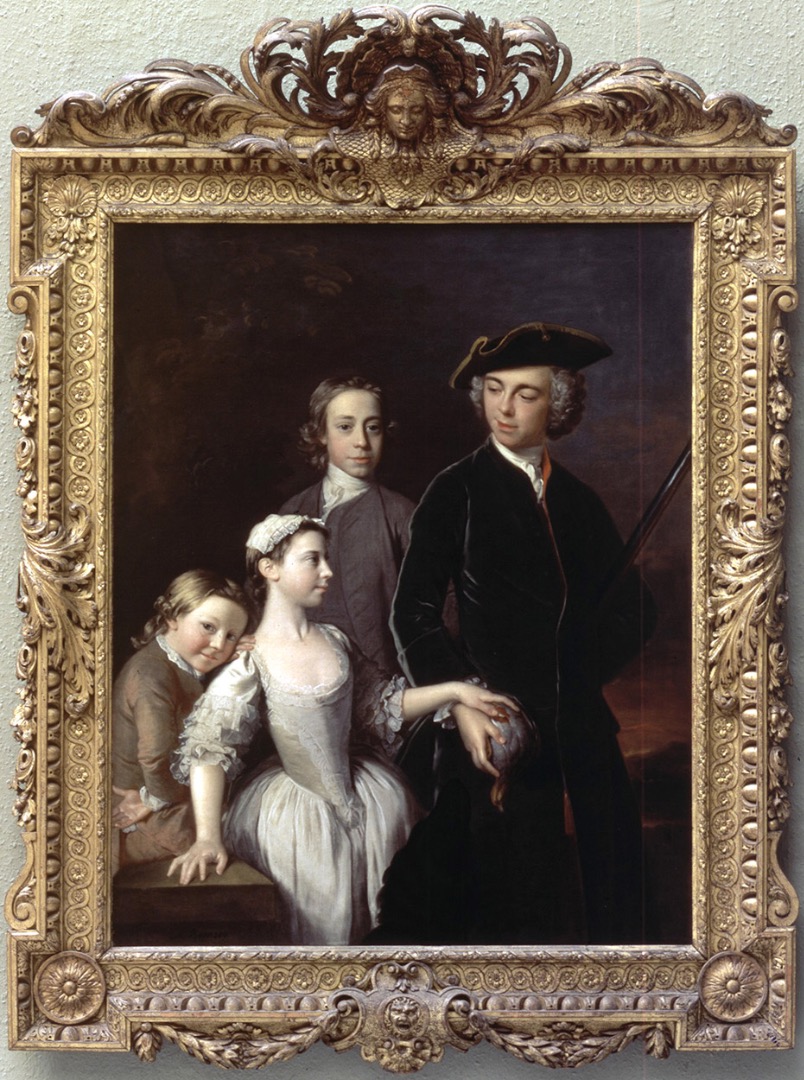
The diffusion of the ‘Kent’ frame, which could mix happily with other styles (such as the ‘Salvator Rosa’/ ‘Carlo Maratta’, and other Italian and French Baroque frames) in almost any British interior, was extremely wide and long-lasting. One of its highest points, as far as frames go, is this beautifully embellished version on Ramsay’s portrait of Thomas Mansel and his siblings, with its architectural ornament: egg-&-dart, floral guilloche chain and enriched spiral ribbon on the contours and frieze; classical leaf paterae in the lower corners; a scrolling cartouche at the bottom and tête espagnolette at the top, together with pendant drops of oak leaves and acanthus, scrolling foliage and swags of bay leaves. The flat architrave profile, which was so different from the concave/convex complexities of Continental Baroque, is given equal opulence by this accretion of meticulously-considered decoration.
<>The Palladian style thus stood in for the Baroque in Britain, where there are very few fully Baroque buildings, and continued in popularity until the classicism of the Adam brothers took over in the later 18th century. Rococo architecture never took root here, either externally or for all but a very few complete interiors; although curvaceously comfortable Rococo furniture, looking-glasses and picture frames were popular.
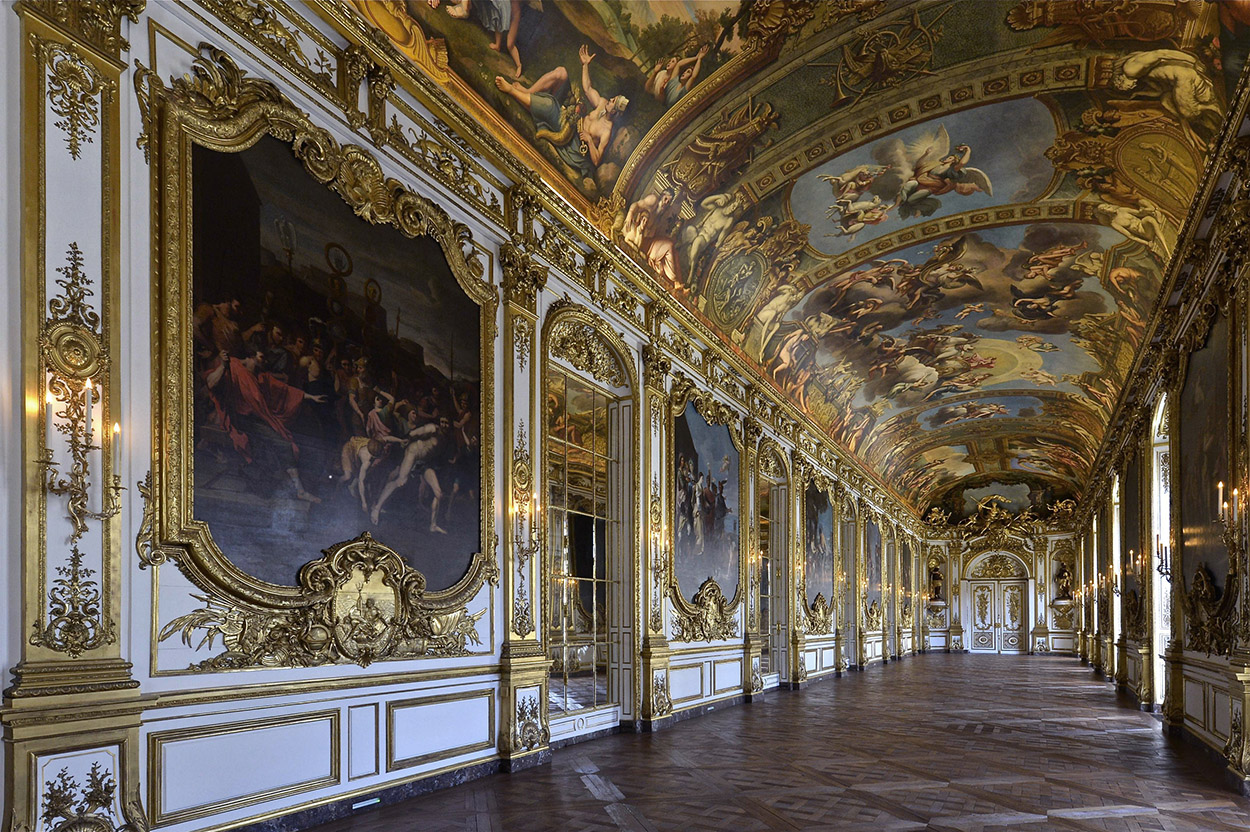
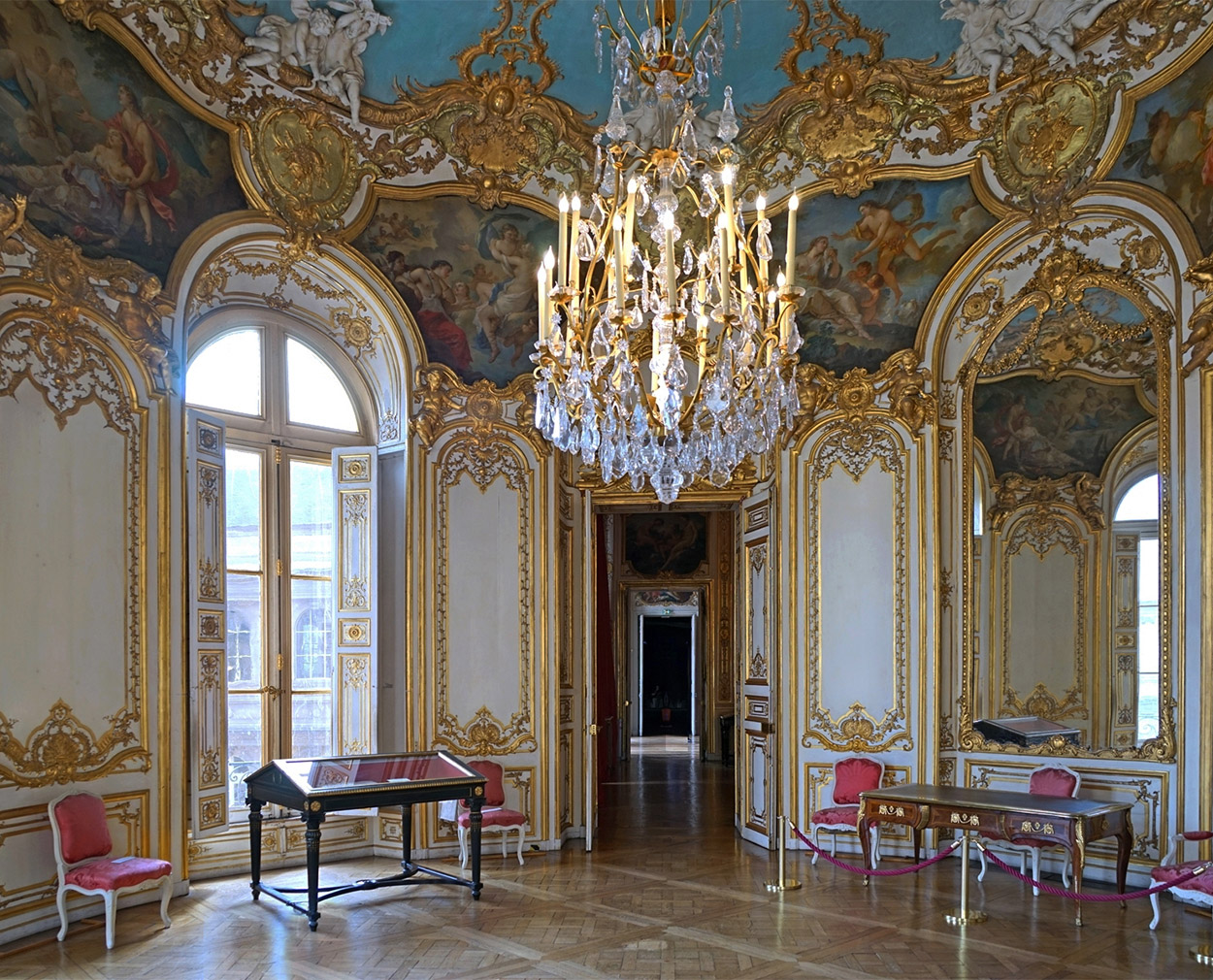
Rococo was an asymmetrical, lighter version of the Baroque, emerging from the interaction of Parisian carvers, sculptors, framemakers and ornemanistes at the Académie de Saint-Luc; and it was whole-heartedly expressed through the completely integrated interior – not like the Kentian interior, with movable pieces slotted into the spaces between architectural features, but as a panelled room adorned with carved boiseries, paintings in integral frames and overdoors, and looking-glasses which were equally absorbed into the wall space. Now the frame had several facets – a border organically integrated with other boiserie borders, holding a piece of panelling, a looking-glass or a painting; a wall, edged with ornamental carving and with various decorative openings; or the entire interior itself.
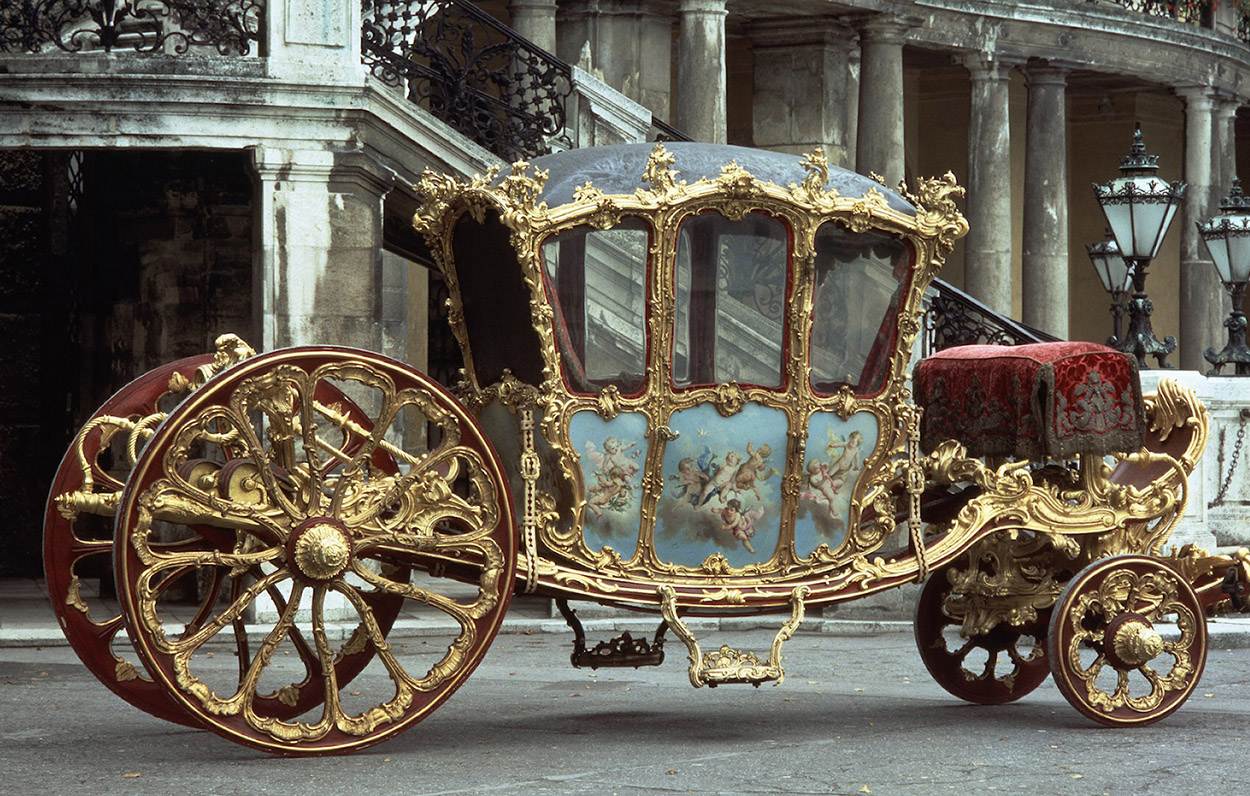
Therefore, although it is most often composed of free-flowing organic ornament, the Rococo is paradoxically one of the most architectural of styles, even transferring its expressive form as a wall of boiseries to the functional, symmetrical structure of a coach – in this case the work of Nicolas Pineau, one of the great Parisian ornemanistes, who originated the asymmetrical cast of Rococo, and refined his shaped borders of airy rocailles to a serpentine slenderness. Rocaille is what gives its name to the Rococo, and it consists of motifs like shells, water and marine organisms, sometimes morphing into leaves or wings or flames; however, these are not the ordered bands of tidy leaf garlands and identical acanthus corners, or the use of objects for their symbolic significance; it is not even the theatrical exaggeration of the Baroque, where a whole frame can be lost beneath a curling forest of scrolling leaves. Rococo is essentially and joyously decorative: and, like the Auricular style, it is also the joy of producing in carved wood the impossible effect of other materials – where an Auricular frame can mimic molten metal, a Rococo frame can simulate water and air.
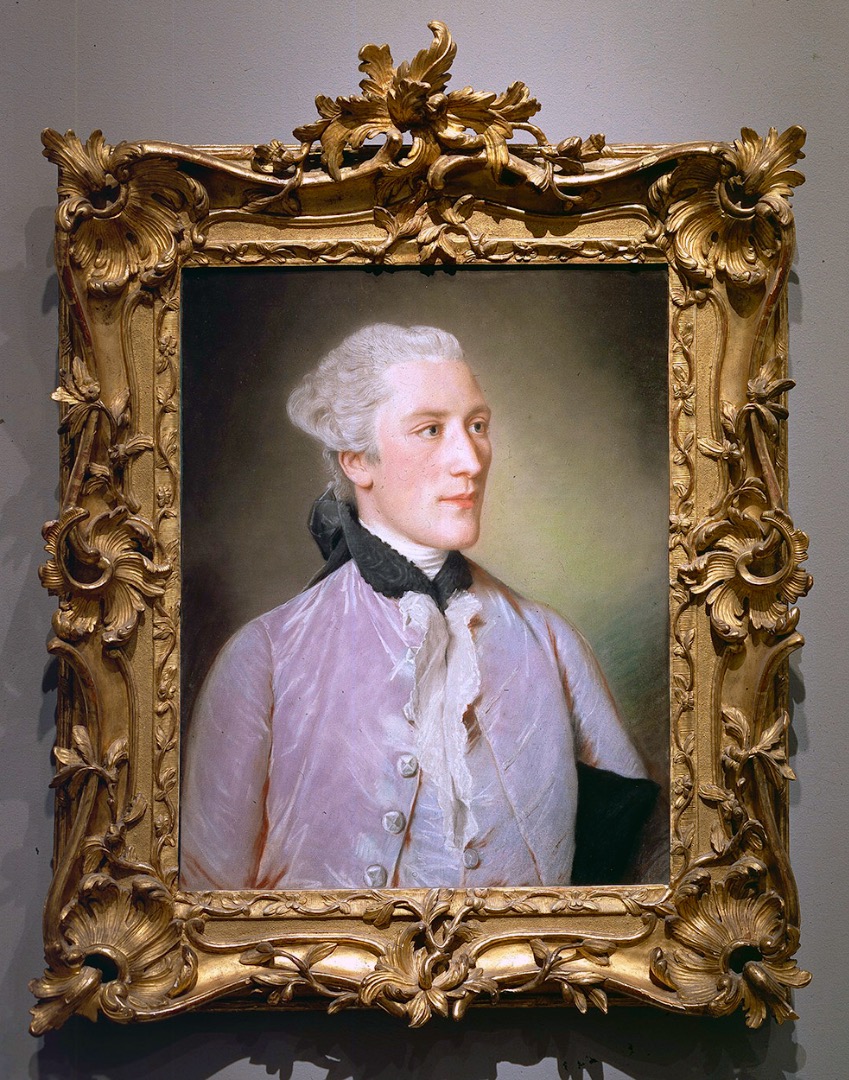
At least nine of these frames were carved for the Swiss pastellist Liotard, probably in Geneva, where he painted the portraits they contain. They are plastic and 3-dimensional in the vein of French Baroque, but the opulent stasis of a Louis XIV, Régence or early Louis XV frame is completely subsumed in the strong sense of movement generated by opposed swirls of acanthus leaves at centres and corners.
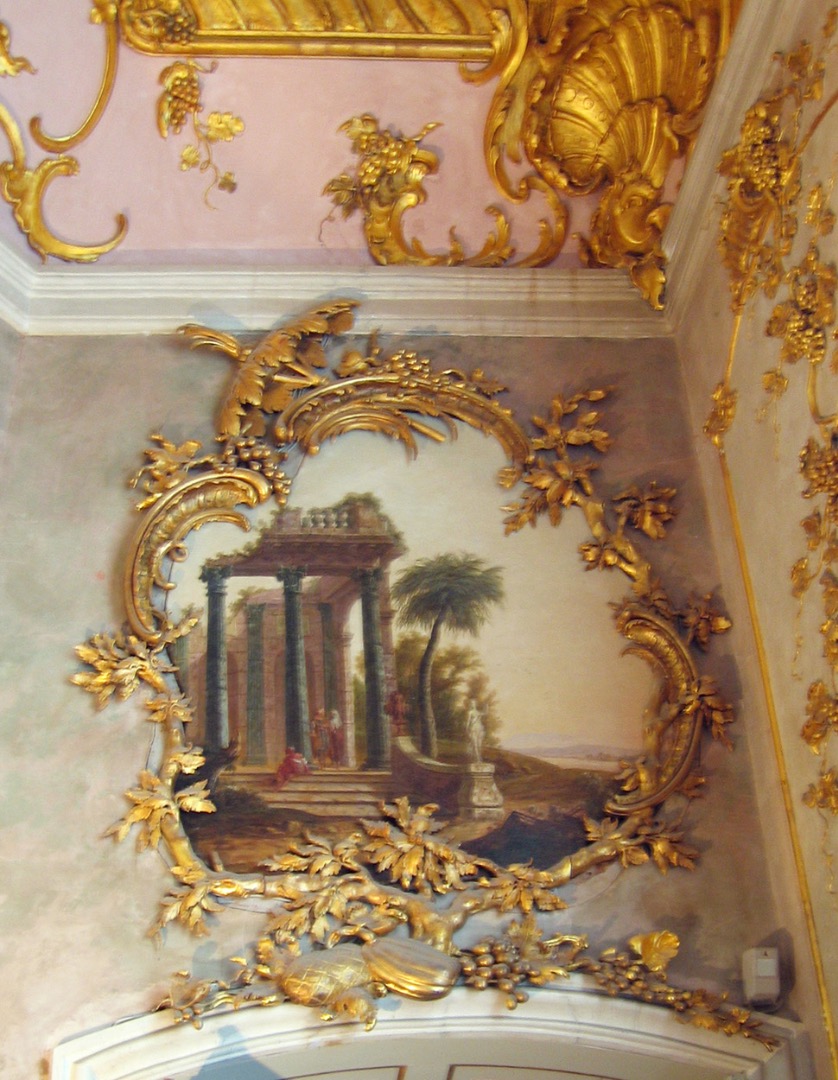
As the style diffused through Europe, it became, particularly in Germany, Austria and Scandinavia, even more wildly asymmetrical, light and flyaway – and yet integral, non-movable frames such as overdoors were still fused with the architecture of the whole interior.
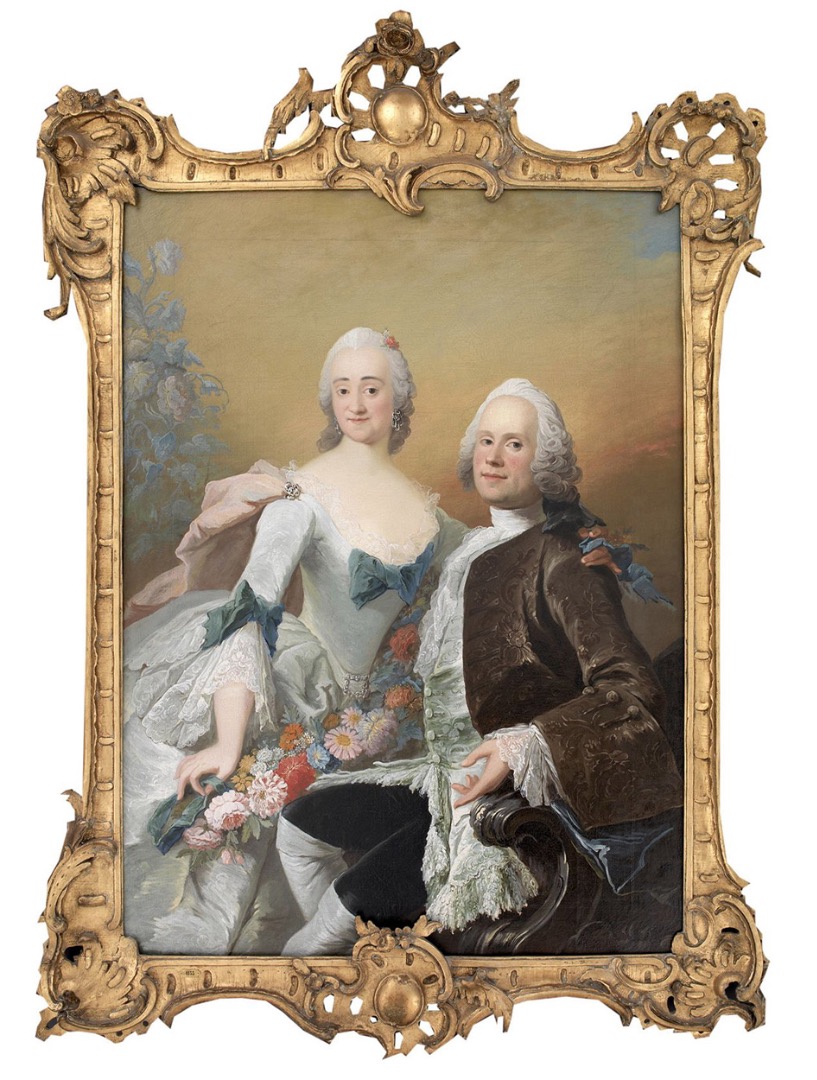
Danish movable frames, like this one, are notable for their exaggeratedly slender rails and large, pierced, asymmetric centres and corners which break through the sight edge, encroaching on the surface of the painting. The canvas was still a rectangular shape, but by use of these optical devices, the frame could soften and animate the whole work, binding it to the integral elements of architectural features, stucco and panelling.
However, by the mid-18th century there was a reaction against the Rococo, catalyzed partly by the flamboyance of high Rococo ornament (although the fashion lingered into the 1760s and 1770s), and partly by a renewed interest in classical Greece and Rome. Further excavations at Pompeii and Herculaneum, particularly from 1750, and the consequent foundation of the Italian Royal Academy in Naples in 1755, drew the attention of artists such as Anton Mengs, and of archaeologists and writers like Johann Wickelmann, whose History of ancient art and essays on the discoveries at Herculaneum were profoundly influential.
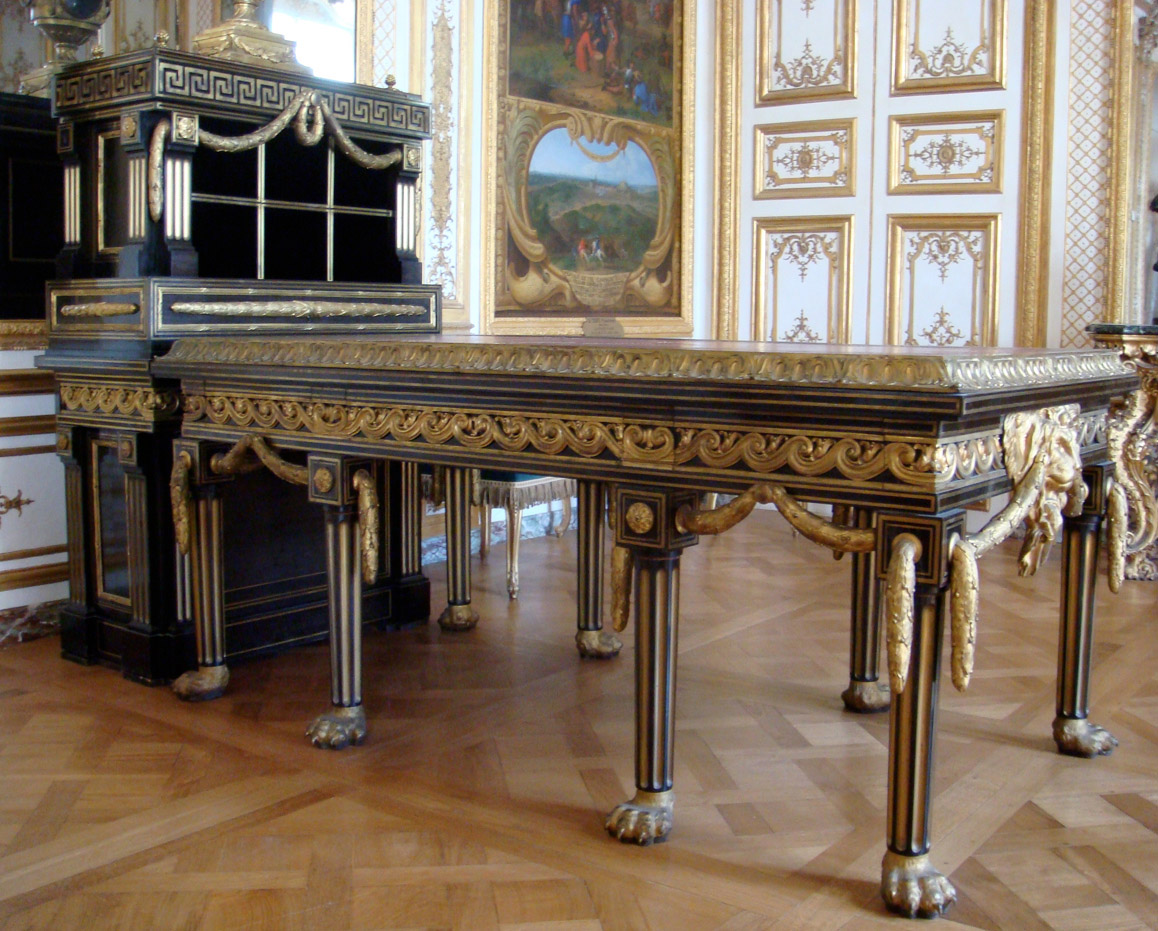
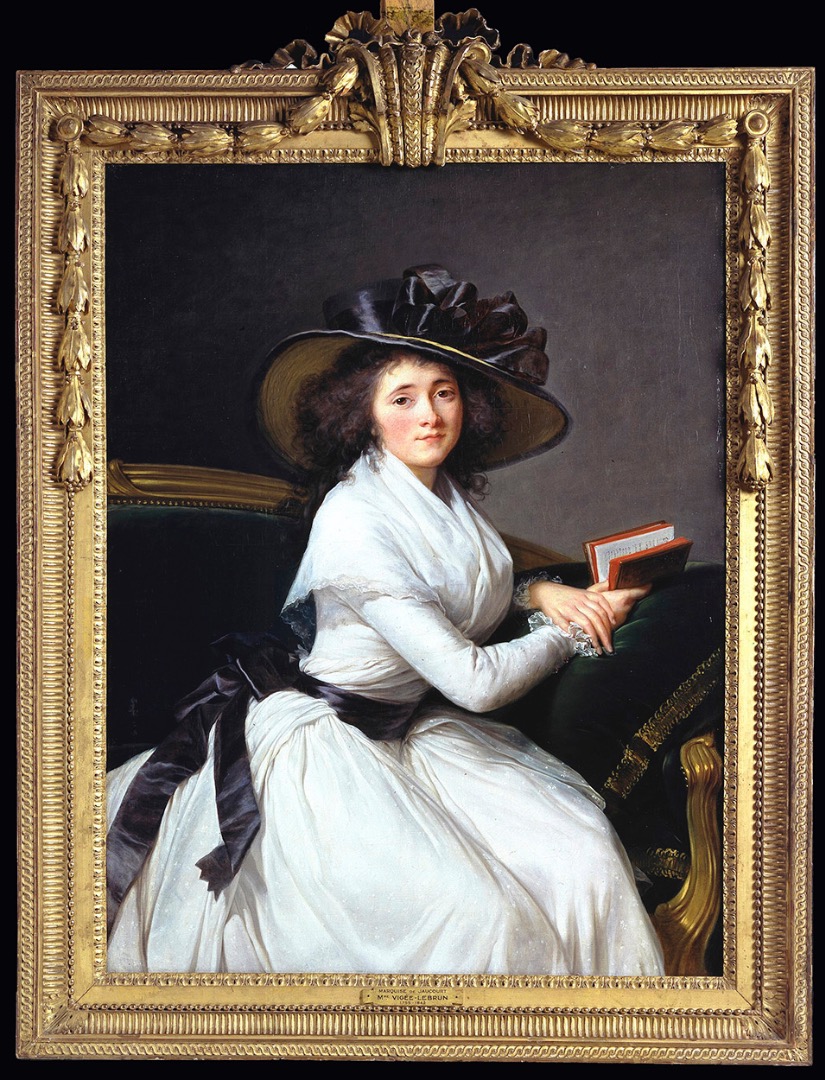
The first objects in 18th century NeoClassical style were in the heavy, austere form known as the goût grec, most notably an important early set of furniture by Louis-Joseph Le Lorrain. Elements of this were influential for quite a long period; the fat, rope-like swags of bay leaves ( on Le Lorrain’s furniture, top) and bunched leaves (on the frame of Vigée Le Brun’s portrait) which were known as ‘cordes à puits’, and the scrolled cartouche on the same frame are examples. These were also architectural features, but in this case from the exterior façades, echoing the sober grandiosity of NeoRoman buildings, and giving – in the case of the Vigée Le Brun frame – the sense of looking through a window into a room, from the world outside.
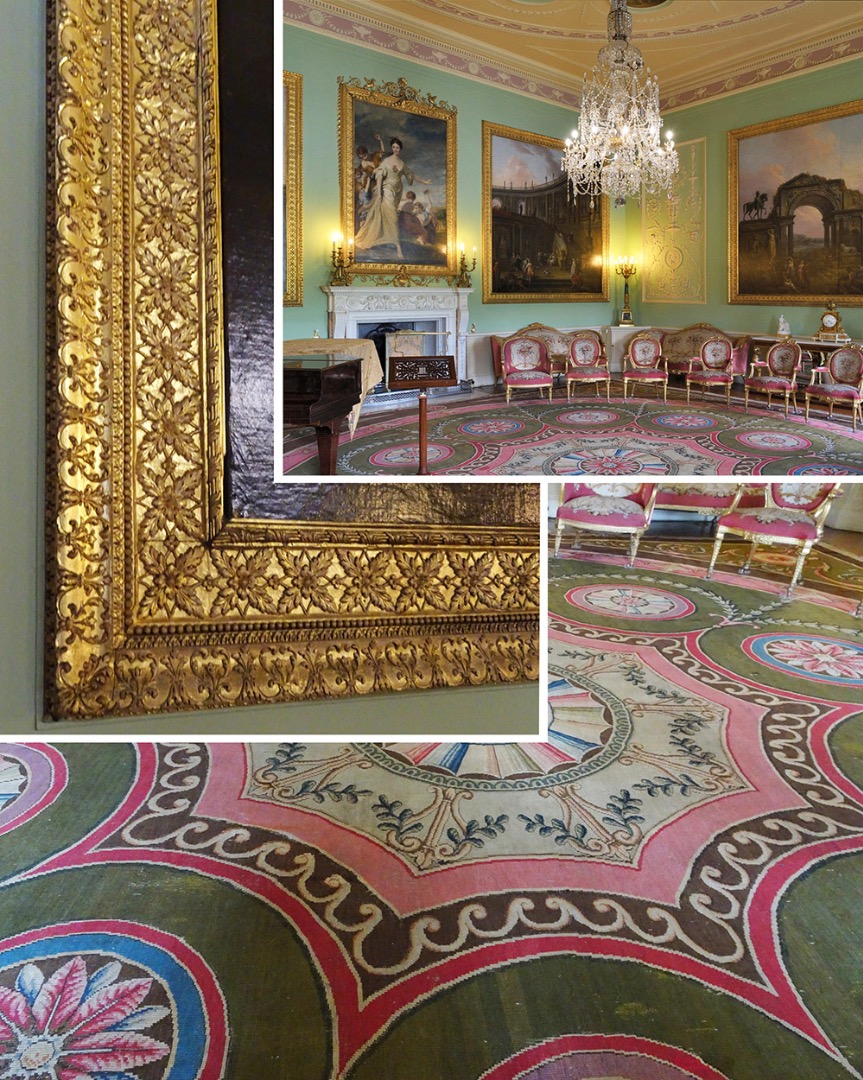
Gradually this version of NeoClassicism morphed into a lighter and more delicate style as integrated interiors were designed, harmonizing (as in Rococo salons) the panelling, other fixed architectural features, looking-glasses and picture frames. Robert Adam, who had returned in 1758 from a four-year Italian tour centred on Rome, very rapidly established an architectural business founded on the classical revival: by 1759 the carver Sefferin Alken was carving frames to Adam’s designs for Kedleston Hall. Instead of the heavy cordes à puits, Adam ‘adopted a beautiful variety of light mouldings, gracefully formed, delicately enriched and arranged with propriety and skill’ (The works in architecture of Robert and James Adam, Esquires, vol. I, p.3). These characterize the Music Room of Harewood House, which was designed as one complete architectural piece, with the colours and motifs in the carpet echoing those of the walls and ceiling, and the decoration of the frames reflecting the stucco ornament of ceiling and entablature.
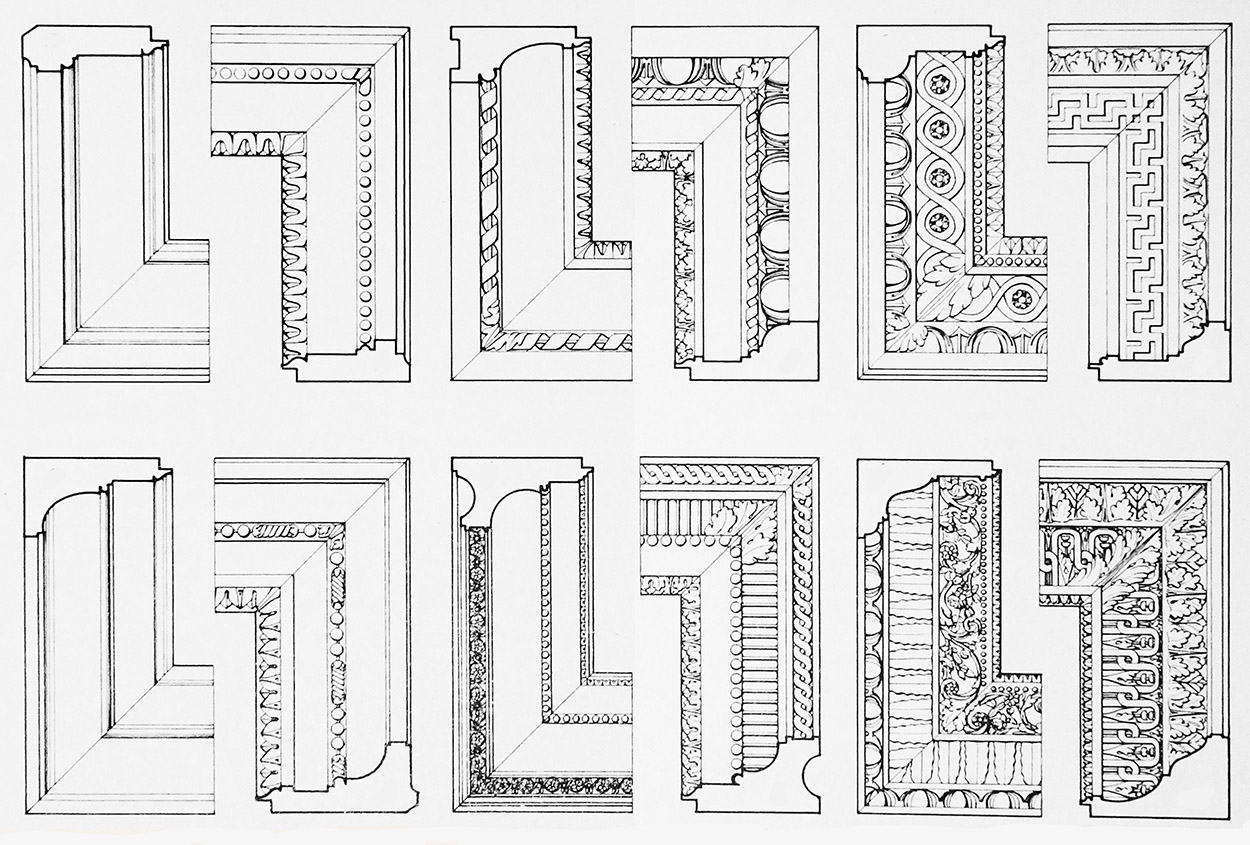
In France, a lighter form of classicism produced the Louis XVI style, and a huge range of frames from the simplest unornamented architrave moulding to deeper entablature and scotia or concave mouldings, decorated with progressively more, and more complex, geometric and architectural motifs.
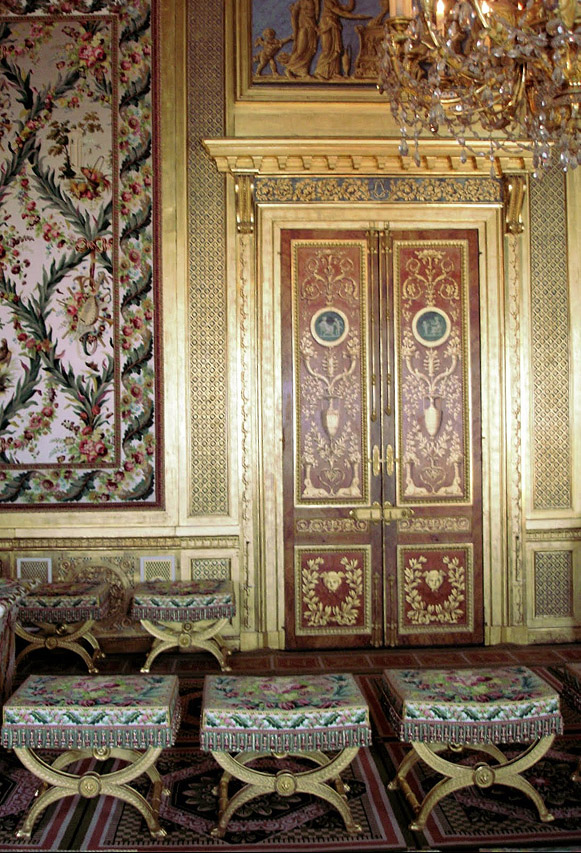
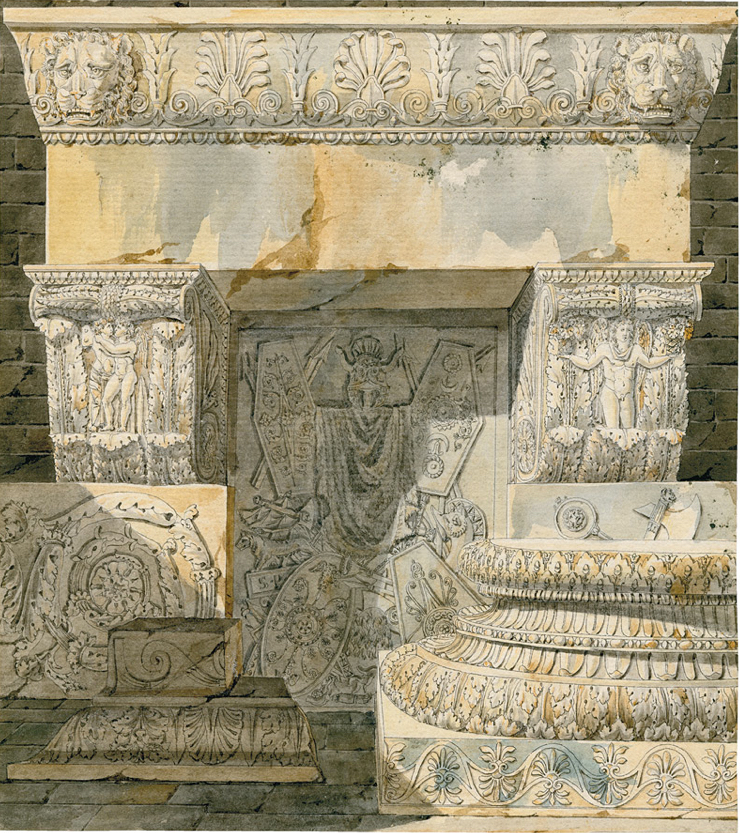
The French Revolution caused less disruption to this fashion than might have been expected, as the Directoire and Empire styles which came in the wake of Napoleon’s rule as First Consul and then, in 1804, as Emperor, were a variant of NeoClassicism, favouring ornament influenced by the latest archaeological discoveries. The Empire style was organized and diffused by Charles Percier and Pierre Fontaine, who were appointed architects du gouvernement in 1801, simultaneously publishing their Recueil de décorations intéreures. Like William Kent and Robert Adam, they oversaw the details of every interior, modelling the internal decoration, where possible, on the frescos excavated in Pompeii and Herculaneum.
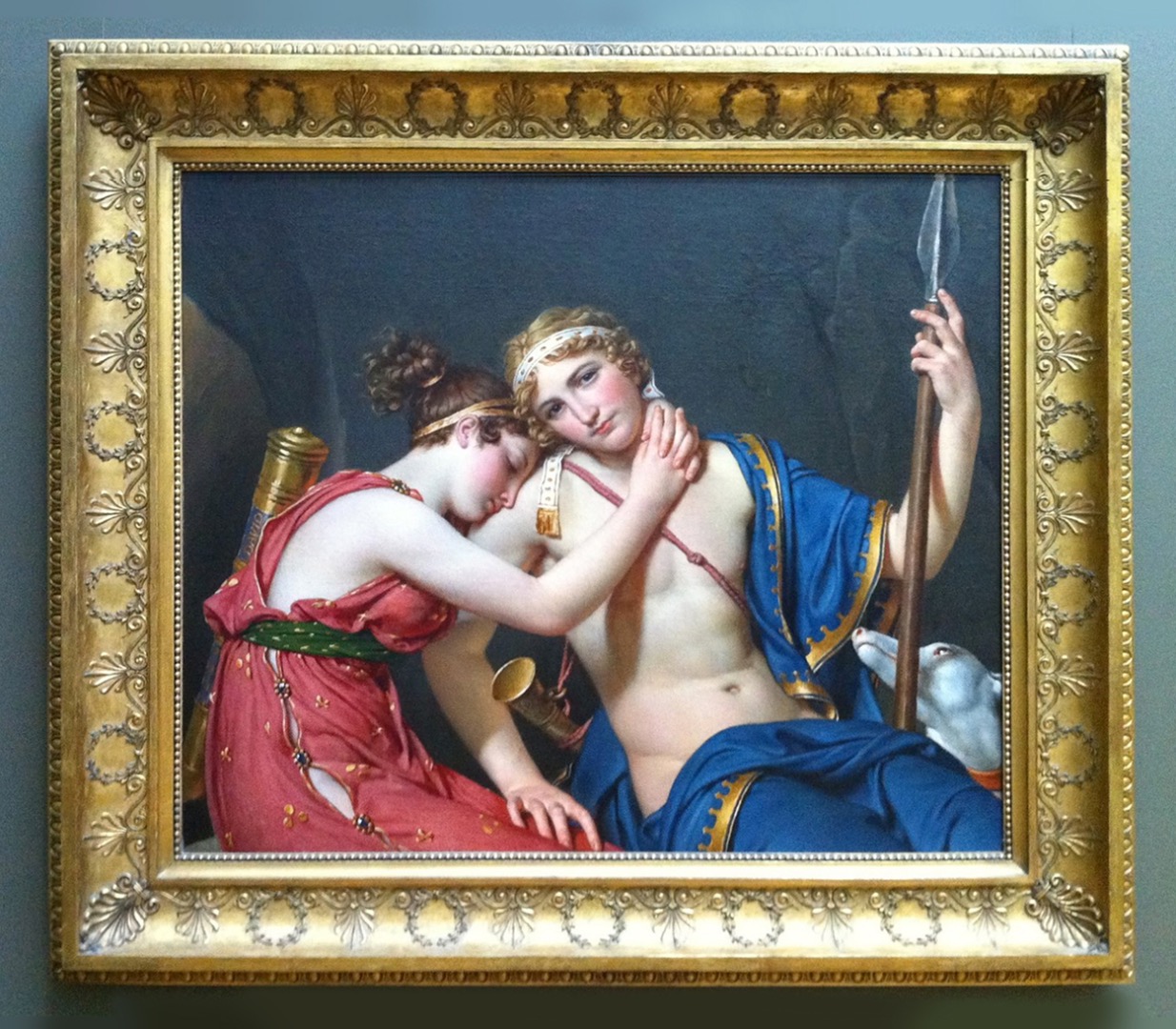
The most popular style of frame for the art in these interiors was composed of one or more scotia mouldings or an ogee and scotia, decorated with shallow-relief palmettes or anthemia (honeysuckle flowers), alternating with lotus or papyrus buds, or (as here) wreaths of bay leaves. The models for these were the shallow-relief running ornaments carved on the friezes of antique Roman buildings, drawn in fine detail in Percier’s watercolour (above). This particular image is actually an imaginary compilation of various decorative fragments, which he describes as, ‘fragments of cornices, brackets and the bases of old columns, taken from different buildings. The ogee moulding with lions’ heads was seen on the façade of a house near Castel Sant’Angelo bridge: the two modillions which support it were taken from the building called Pilate’s house, and the column base from the Vatican Museum’.

The ornaments were pressed from plaster in hand-carved moulds and applied to the wooden frame before being gilded. This was a fast and economical way to produce raised decoration, and resulted from a conjunction of causes: the industrial revolution had brought in more efficient methods of production, using machine-sawn lengths of wood and applied ornament; the long European wars had reduced the work force and made labour far more expensive; Napoleon (like his allies and enemies) had less money to spend on framing, for the same reason.
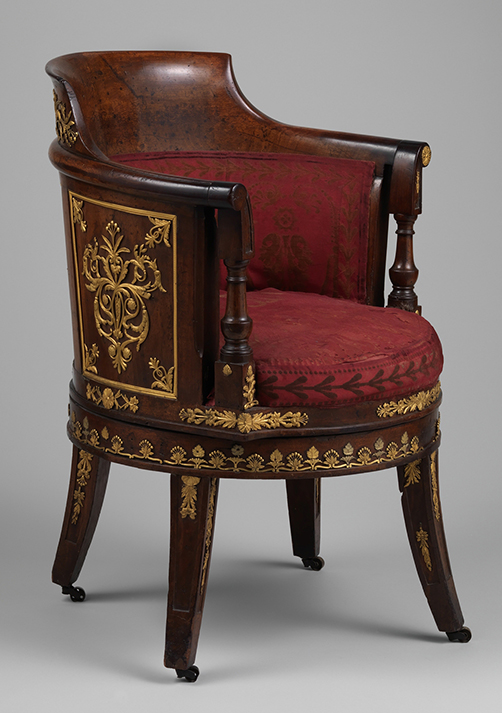
The Empire style was probably the last stylistic movement on a continental scale which saw such complete unity of theme throughout the whole of an interior. It spread throughout Europe, since many countries were – at least for a time – under Napoleon’s control; and even in those which remained free, like Britain, the influence of fashion seeped inexorably in, bringing empire-line dresses, ormolu tripods and moulded palmettes in its wake.
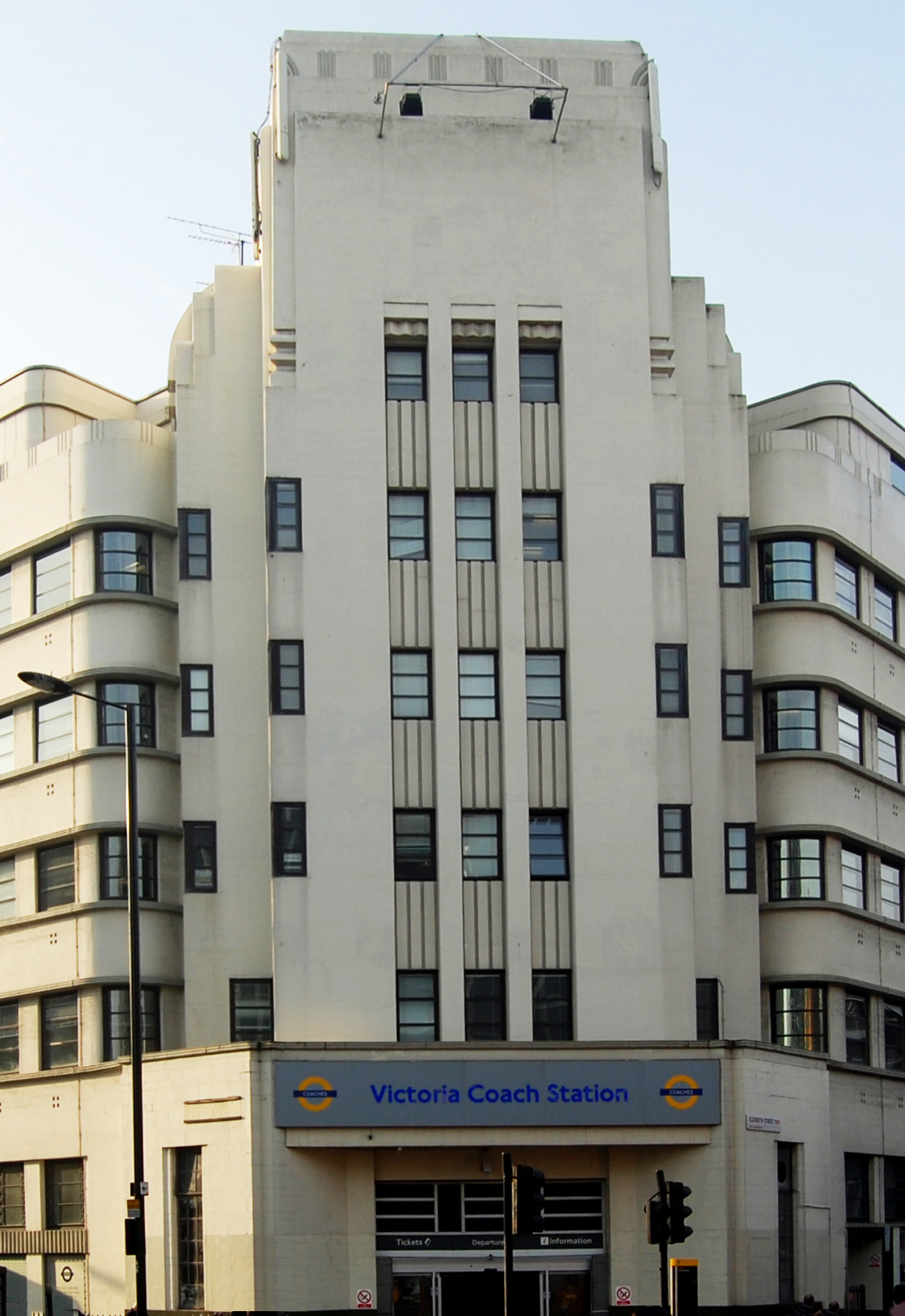
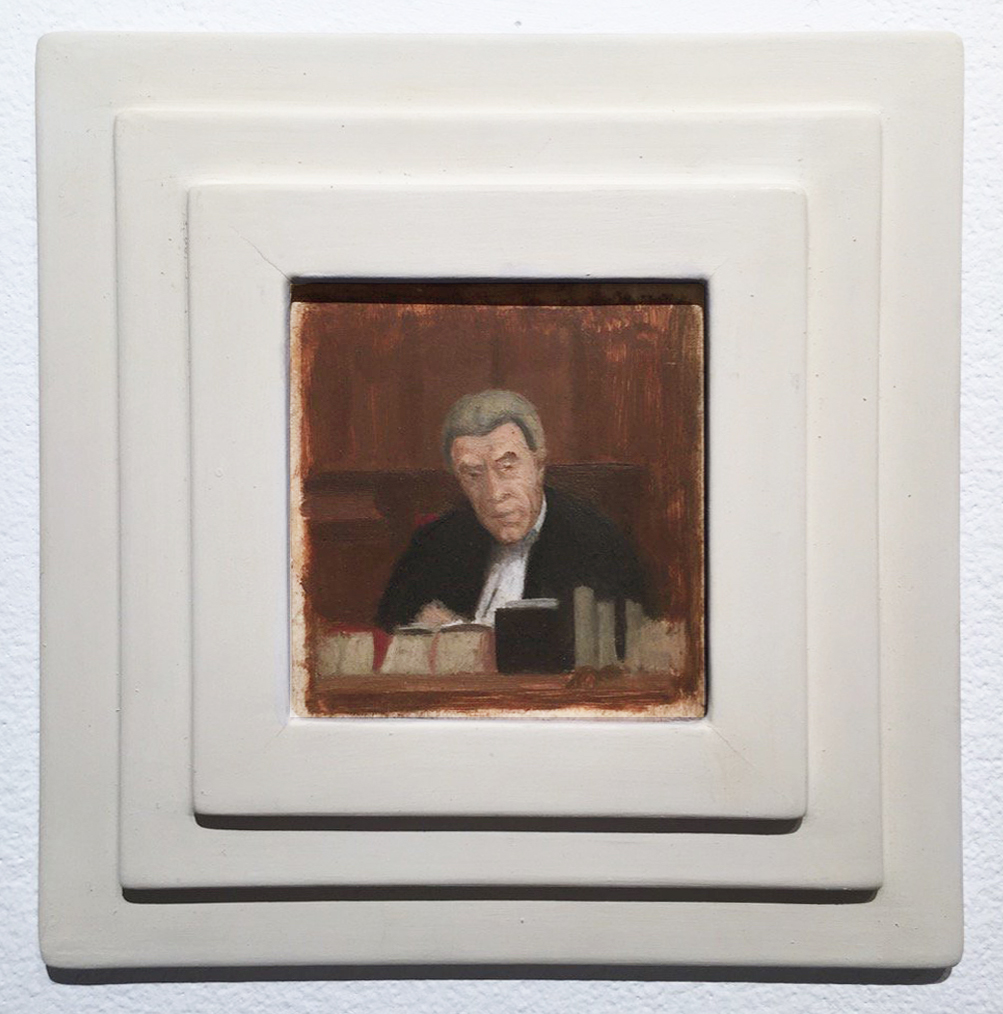
Later styles, such as Biedermeier or Secessionist, were less ubiquitous, and depended more on furnishings and frames set within architecturally relatively plain rooms than on a completely integrated interior. However, correspondences between the structure and ornament of buildings inevitably continue, since the relationship is integral and innate; possibly more evidently between exterior architecture (façades and their contours) and the joinery and finish of the frame. An example is the art deco frontage of Victoria Coach station, and the stepped ‘Gluck’ frame, invented (and patented) by the artist Hannah Gluckstein, and used from 1933. Even at the most mundane level, every moulding we buy today in a specialist gallery or a high street shop is based on an architectural element which derives ultimately from an antique Greek or Roman building.
